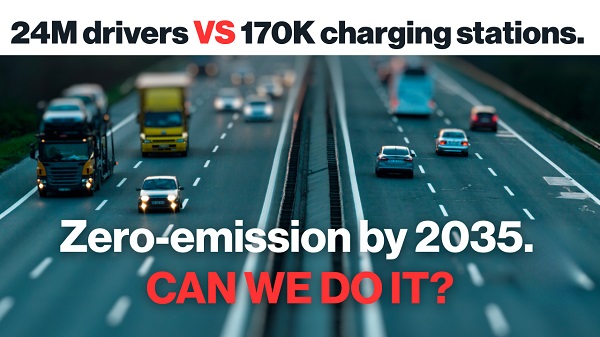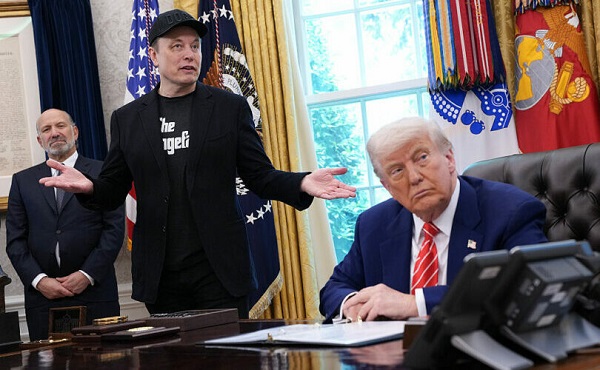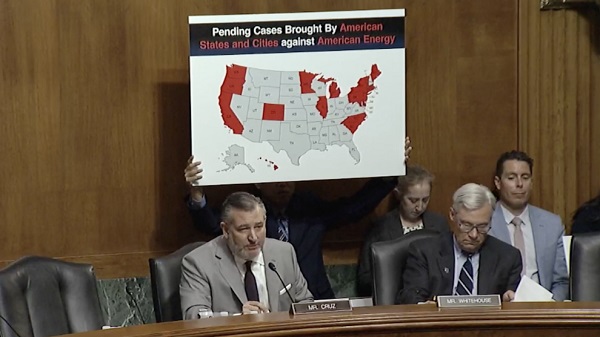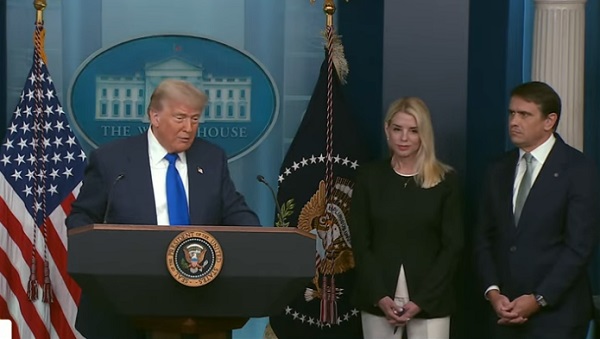Energy
Federal emissions cap a slap in the face to Indigenous peoples: Stephen Buffalo

From the MacDonald Laurier Institute
By Stephen Buffalo
We are sick and tired of being poor and welfare dependency. We have, particularly in the past 20 years, established hundreds of companies and partnerships and trained thousands of our people for work in the energy industry. Now the government is cutting our feet out from under us again.
It’s hard to remain quiet. Prime Minister Justin Trudeau has long said that relationship and reconciliation with Indigenous peoples is a top priority for his government.
And then he ignores us again. The Government of Canada is on the verge of doing it once more, this time on the emissions cap.
The government is preparing for COP28, the world climate event being held, seemingly without a touch of irony, in Dubai. The latest attempt at global attention grabbing is anticipated to be a reduction in greenhouse gas emissions which, in Western Canada, is a code for a sharp drop in authorized fossil fuel production.
Over the past four decades, Canadian governments urged and promoted Indigenous peoples to engage in the natural resource economy. We were anxious to break our dependence on government and, even more, to exercise our treaty and Indigenous rights to build our own economies. We jumped in with far more enthusiasm and commitment than most Canadians appreciate.
Well over 100 First Nations are substantially invested in oil and gas production as employees, employers, partners and equity participants. Dozens more have approved pipeline construction across their traditional lands. Many more have solid investments in oil and gas development and infrastructure. And we seek a greater and more meaningful role.
Of course, we do not support unchecked exploitation of natural resources. We insist on careful attention to environmental protection and remediation. And we expect and deserve fair compensation for the extraction of oil and gas from our lands. We are sick and tired of being poor and welfare dependency. We have, particularly in the past 20 years, established hundreds of companies and partnerships and trained thousands of our people for work in the energy industry.
Now the government is cutting our feet out from under us again. Over the past decade, Ottawa slowed pipeline development, passed legislation that hampered resource development, imposed increasingly strict controls on fossil fuel development, and created new levies and taxes to thwart our efforts.
They did all they could to shame the industry that, more than any other, sustains Canadian prosperity. Rapid population growth, manufacturing and urban sprawl, all major contributions to greenhouse gas emissions, have been largely untouched.
And now, in a bid to make Canada look ecologically virtuous on the world stage, the Liberal government is poised to impose further restrictions on the oil and gas sector. This is happening as Indigenous engagement, employment and equity investment is growing and at a time when our communities have had their first taste of real and sustainable prosperity since the newcomers killed off all the buffalo. Thanks for nothing.
We are astonished by Canada’s seemingly limited understanding of the role of oil and gas in Canadian prosperity. We get — and embrace — the concern about climate change and emissions. We support logical, collectively developed measures that will contribute to a reduction in Canada’s ecological impacts. But let us do this with our eyes wide open and by looking at all possible ways of meeting our climate targets. Norway gets little pushback for major expansions of its oil production; Canada, ever and undeservedly the global environmental doormat, takes intense criticism while operating one of the most environmentally sound and regulated energy sectors in the world.
All of Canada will pay a big price for our faux stewardship of the country’s remarkable energy resources. The federal government, wrestling with growing debt and staggering interest payments, collects billions annually in oil and gas revenues. The three western provinces contribute billions to federal equalization payments, with Quebec receiving the largest share.
But the western contribution earns little sympathy from Quebec, which stopped discussion of the Energy East pipeline in its tracks, closing off a new market for Canadian producers and retaining Eastern Canada’s dependence on imported oil. We are still waiting for a national “thank you” for access to the resources and the cash harvested from our oil and gas-rich lands.
It is fair to say that Canadians and the national government do not understand the seething anger building up in our communities. I know that I am not the only one who is truly upset. We followed government signals and found our feet economically in the past two decades. We created a space for ourselves in an industry that is fundamental to Canadian prosperity.
Indigenous people demonstrated their entrepreneurial skills and their ability to invest in both community development and long-term wealth creation keeping in mind both our present and future generations. The government seems willing to overturn our carefully won opportunities and prosperity, without the courtesy of full conversation acting as a colonial power.
Indigenous people have been betrayed many times over the last 200 years, but the most recent betrayals always hurt the most. We thought Canada had turned the corner in its respect for Indigenous peoples and our rights. Watch carefully over the next few days. If the prime minister talks about emissions controls, he really means production rollbacks. This is a slap in the face of Indigenous peoples.
Stephen Buffalo is a proud member of the Samson Cree Nation. He is president and CEO of the Indian Resources Council of Canada, chair of the board of directors of Alberta Indigenous Opportunities Corporation, a senior fellow at the MacDonald Laurier Institute, and the first ever Indigenous governor of the Canadian Energy Executive Association.
Energy
B.C. Residents File Competition Bureau Complaint Against David Suzuki Foundation for Use of False Imagery in Anti-Energy Campaigns
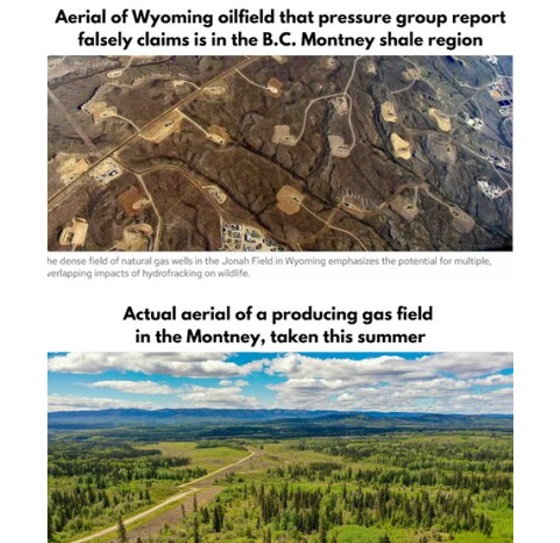
From Energy Now and The Canadian Newswire
A group of eight residents of Northeast British Columbia have filed a formal application for inquiry with Canada’s Competition Bureau, calling for an investigation into the David Suzuki Foundation’s (the Foundation) use of false and misleading imagery in its anti-energy campaigns.
The complaint alleges that the Foundation has repeatedly used a two-decade-old aerial photograph of Wyoming gas wells to falsely depict modern natural gas development in B.C.’s Montney Formation. This area produces roughly half of Canada’s natural gas.
Key Facts:
- The misleading image has been used on the Foundation’s website, social media pages, reports and donation appeals.
- The Foundation has acknowledged the image’s true source (Wyoming) in some contexts but has continued to use it to represent B.C. development.
- The residents claim this materially misleads donors and the public, violating Section 74.01(1) of the Competition Act.
- The complaint is filed under Sections 9 and 10 of the Act, asking the Bureau to investigate and impose remedies including ceasing the conduct, publishing corrective notices, and returning proceeds.
Quote from Deena Del Giusto, Spokesperson:
“This is about fairness and truth. The people of Northeast B.C. are proud of the work they do to produce energy for Canada and the world. They deserve honest debate, not scare tactics and misleading imagery used to raise millions in donations. We’re asking the Competition Bureau to hold the David Suzuki Foundation to the same standard businesses face: tell the truth.”
Background:
Natural gas development in the Montney Formation supports thousands of jobs and fuels economic activity across the region. Accurate public information is vital to informed debate, especially as many Canadians live far from production sites.
SOURCE Deena Del Giusto
Economy
Trump opens door to Iranian oil exports

This article supplied by Troy Media.
U.S. President Donald Trump’s chaotic foreign policy is unravelling years of pressure on Iran and fuelling a surge of Iranian oil into global markets. His recent pivot to allow China to buy Iranian crude, despite previously trying to crush those exports, marks a sharp shift from strategic pressure to transactional diplomacy.
This unpredictability isn’t just confusing allies—it’s transforming global oil flows. One day, Trump vetoes an Israeli plan to assassinate Iran’s supreme leader, Ayatollah Khamenei. Days later, he calls for Iran’s unconditional surrender. After announcing a ceasefire between Iran, Israel and the United States, Trump praises both sides then lashes out at them the next day.
The biggest shock came when Trump posted on Truth Social that “China can now continue to purchase Oil from Iran. Hopefully, they will be purchasing plenty from the U.S., also.” The statement reversed the “maximum pressure” campaign he reinstated in February, which aimed to drive Iran’s oil exports to zero. The campaign reimposes sanctions on Tehran, threatening penalties on any country or company buying Iranian crude,
with the goal of crippling Iran’s economy and nuclear ambitions.
This wasn’t foreign policy—it was deal-making. Trump is brokering calm in the Middle East not for strategy, but to boost American oil sales to China. And in the process, he’s giving Iran room to move.
The effects of this shift in U.S. policy are already visible in trade data. Chinese imports of Iranian crude hit record levels in June. Ship-tracking firm Vortexa reported more than 1.8 million barrels per day imported between June 1 and 20. Kpler data, covering June 1 to 27, showed a 1.46 million bpd average, nearly 500,000 more than in May.
Much of the supply came from discounted May loadings destined for China’s independent refineries—the so-called “teapots”—stocking up ahead of peak summer demand. After hostilities broke out between Iran and Israel on June 12, Iran ramped up exports even further, increasing daily crude shipments by 44 per cent within a week.
Iran is under heavy U.S. sanctions, and its oil is typically sold at a discount, especially to China, the world’s largest oil importer. These discounted barrels undercut other exporters, including U.S. allies and global producers like Canada, reducing global prices and shifting power dynamics in the energy market.
All of this happened with full knowledge of the U.S. administration. Analysts now expect Iranian crude to continue flowing freely, as long as Trump sees strategic or economic value in it—though that position could reverse without warning.
Complicating matters is progress toward a U.S.-China trade deal. Commerce Secretary Howard Lutnick told reporters that an agreement reached in May has now been finalized. China later confirmed the understanding. Trump’s oil concession may be part of that broader détente, but it comes at the cost of any consistent pressure on Iran.
Meanwhile, despite Trump’s claims of obliterating Iran’s nuclear program, early reports suggest U.S. strikes merely delayed Tehran’s capabilities by a few months. The public posture of strength contrasts with a quieter reality: Iranian oil is once again flooding global markets.
With OPEC+ also boosting output monthly, there is no shortage of crude on the horizon. In fact, oversupply may once again define the market—and Trump’s erratic diplomacy is helping drive it.
For Canadian producers, especially in Alberta, the return of cheap Iranian oil can mean downward pressure on global prices and stiffer competition in key markets. And with global energy supply increasingly shaped by impulsive political decisions, Canada’s energy sector remains vulnerable to forces far beyond its borders.
This is the new reality: unpredictability at the top is shaping the oil market more than any cartel or conflict. And for now, Iran is winning.
Toronto-based Rashid Husain Syed is a highly regarded analyst specializing in energy and politics, particularly in the Middle East. In addition to his contributions to local and international newspapers, Rashid frequently lends his expertise as a speaker at global conferences. Organizations such as the Department of Energy in Washington and the International Energy Agency in Paris have sought his insights on global energy matters.
Troy Media empowers Canadian community news outlets by providing independent, insightful analysis and commentary. Our mission is to support local media in helping Canadians stay informed and engaged by delivering reliable content that strengthens community connections and deepens understanding across the country.
-

 armed forces1 day ago
armed forces1 day agoCanada’s Military Can’t Be Fixed With Cash Alone
-

 Alberta1 day ago
Alberta1 day agoCOVID mandates protester in Canada released on bail after over 2 years in jail
-

 International1 day ago
International1 day agoTrump transportation secretary tells governors to remove ‘rainbow crosswalks’
-

 Business1 day ago
Business1 day agoCanada’s loyalty to globalism is bleeding our economy dry
-
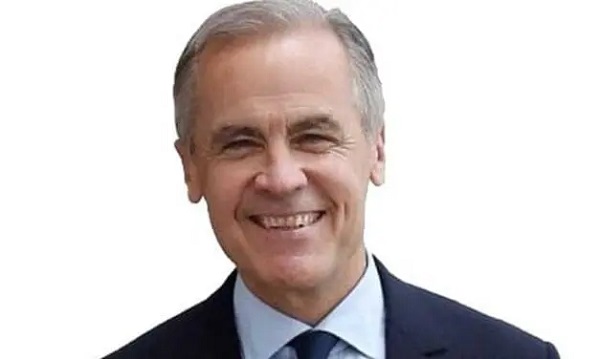
 Business1 day ago
Business1 day agoCarney’s spending makes Trudeau look like a cheapskate
-
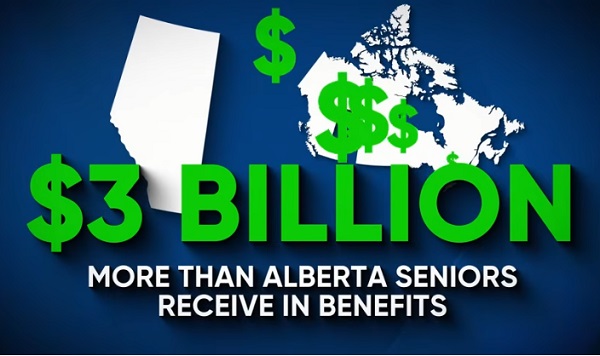
 Alberta1 day ago
Alberta1 day agoAlberta Next: Alberta Pension Plan
-

 Crime2 days ago
Crime2 days agoProject Sleeping Giant: Inside the Chinese Mercantile Machine Linking Beijing’s Underground Banks and the Sinaloa Cartel
-

 C2C Journal23 hours ago
C2C Journal23 hours agoCanada Desperately Needs a Baby Bump



